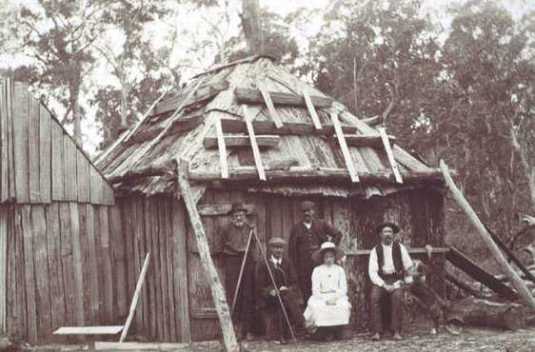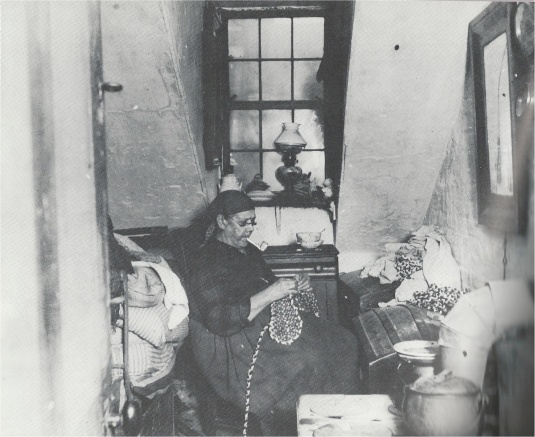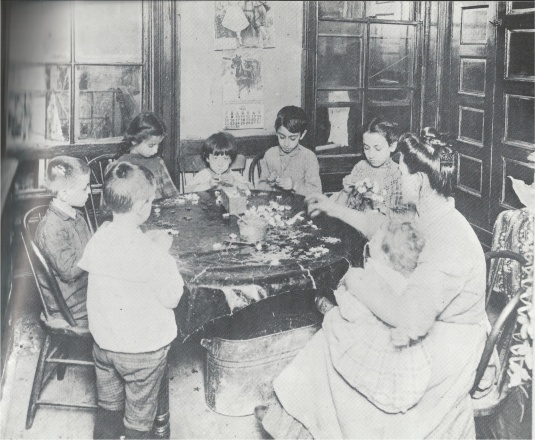Today’s post comes courtesy of my friend Deidra, who grew up the 1960’s and 70’s, in a heavily Italian-American neighborhood in coastal New Jersey, along with her two younger sisters Toni and Susan. On the street they grew up on, Deidra and her sisters were surrounded by relatives fostering a very strong sense of family and community which has stayed with her to this day.
Deidra had often regaled me with the stories of the childish adventures she and her sisters shared, but what I found really interesting, was that she and her sisters had actually written down these stories of everyday life so that they would be preserved for posterity and able to be shared with generations to come. In fact they have enough material for an entire book.
I don’t think we can underestimate the importance of preserving these kinds of memories, because they are a window into a different time and they are an intriguing reminder of how our lives were shaped. In fact just today, a friend and fellow blogger wondered if she should keep writing her blog, fearing that she had nothing interesting left to say and that no one would want to read about, what she considered, the boring details of her life.
But the thing is, history is being written today in the virtual world. And what a wonderful record it is going to be for those next generations, to read about the Can-Do Women of today. For them to be able to read about their grandparents or parents lives from these wonderful online journals is a gift that we can’t quite yet fully appreciate. Think about the thrill of finding some old piece of memorabilia in your attic from your family’s past. A photograph, a letter, a treasured family heirloom, a diary, or whatever the trigger may be, the thrill of remembering another time and place reminds us that these written records of everyday life need to be thought of as valuable time capsules worth preserving and most certainly worth writing.
Here is just one of Deidra’s stories which speaks really well to the bond between sisters and perhaps how child-rearing practices have changed from when Deidra was a child.
***********************************
My sisters…Miss Baloney and Pee-u-san. Those were two of my favorite nicknames for Toni and Susan. They were my two wards on most days after school and on weekends. Everything bad that they did was always my fault and well, since I had to watch over them and take the heat, I could at least call them pet names once in a while. It’s a sib thing. Quite frankly, Pee-U-san was an under-the-skin kind of name for Susan to bear, especially in front of other people, due to the explanation (bathroom-related). However, perpetually pleasant Toni wore the Miss Baloney name with pride. It was sort of like her alter ego given her love of all things baloney – or bologna as is the proper spelling. She would take a baloney sandwich on Wonder Bread over a PBJ any day, without question. It seemed like every kid would back then, and did, but no one would admit to it now, years later. Baloney lost is luster over the years. I’m sure during the 1980’s baloney was linked to some illness or to ADHD or because parents today look at labels and now know what is in the baloney product. Today, parent refuse to serve their kids what the kids in my neighborhood thought was a delicacy.
Anyway, my mother was an advocate especially when we were going elsewhere for this mystery meat. “Go to Schmidts” was all we needed to hear before the three of us, with me in the lead, headed out our door, left at the driveway, right after three houses into the “alley” headed for Schmidts. Schmidts — the lone brick building situated in the alley way that connected our street with the street behind us. We thought the alley was haunted even in the middle of a sunny day. The alley was the spot that all the boys in the hood went to hide during hide and seek although they never got found because no one would go into the alley to look for them. But Schmidts – and the promise of free baloney slices – was too much to handle. On a Saturday especially, how could there be anything but opportunity?
So there we went, me and my two sisters heading off to visit Mr. Schmidt and his six brothers – all similarly named Mr. Schmidt – at the meat place to ask for a piece of baloney. We’d walk in, the smell of cold meat on concrete floors on a summer day attacking us at once, and wait until we saw one of the Mr. Schmidts. “Hi Mr. Schmidts,” in unison announced the three of us. “Can we have a piece of baloney?” Mr. Schmidt (they were almost undistinguishable given their similar bloody aprons, white hair and Germanic, weathered faces) would head over to the meat case, take the biggest piece of baloney from it and slice us up three pieces that he would roll up for us. You would think we hadn’t eaten in days the way we watched him approach us with the baloney rolls, Toni getting dizzy at the site of her favorite food. We savored it, we sure did, monitoring our intake and making it last (we’re talking baloney, not ice cream here).

Ahhhhh....The Stuff Memories Are Made Of.
We would linger around Schmidts after our snack but would never ask for another piece. Actually, Toni would since it was equivalent to her “fix” for the day. On top of that, if my mother didn’t have baloney in the fridge, Toni would be very disappointed that she didn’t ask when she had the chance. I wouldn’t take it; I wouldn’t let Susie either for fear that we would overstay our welcome and not feel comfortable going back the next day to restart the entire process.
But we would go everyday. It was just our thing. Our mother loved getting us out of the house so she could smoke and gossip on the phone, we got fed and the Schmidt brothers seemed happy to have us there. But here’s the thing, fast forward to today…what mother would let her three daughters walk alone from their home into a possibly haunted alleyway to visit seven identical old men who ran a slaughterhouse? Are there even places called slaughterhouses anymore? I know there are no kids who like baloney anymore.
********************************************
How do you preserve your memories? Are you a blogger, do you keep a diary, are you the family photographer or archivist ? Tell us what you’re doing with your stories.
 One such woman, Winifred Steger (1882-1981) hailed from my native Australia, and whose desperate circumstances and life as a single mother led her to the most unbelievable adventures in a time when these kinds of exploits by a woman were practically unthinkable .
One such woman, Winifred Steger (1882-1981) hailed from my native Australia, and whose desperate circumstances and life as a single mother led her to the most unbelievable adventures in a time when these kinds of exploits by a woman were practically unthinkable .


 Jacob A. Riis
Jacob A. Riis











